Reach for the stars: Planetariums and observatories worth the drive
Story by Mackenzie Lionberger
On a clear night in the Lowcountry, it’s easy to lose yourself beneath the stars. As the tide rolls in, constellations shimmer overhead. You might spot Jupiter glowing low in the east or trace Orion’s belt as it stretches across the horizon. Those moments are magical, but when you want to experience the universe in high definition, a road trip to one of the Southeast’s planetariums or observatories is well worth it.
These destinations are built to make the invisible visible. As Tom Martinez, director of the Charleston Planetarium, puts it, “You’re able to basically travel to the planet itself, almost as if you were going in a rocket.” From historic telescopes to state-of-the-art dome theaters, each stop offers its own way to explore the cosmos. Here are some of the best options for anyone ready to look a little closer at the night sky.
Big city, bigger universe
Fernbank Science Center Planetarium, Atlanta
Drive time: 4 hours, 48 minutes (285 miles)
Fernbank is one of the Southeast’s largest planetariums, and it delivers a show to match. Open to the public, its programs cover the full spectrum, from kid-friendly journeys through the solar system to mind-bending explorations of black holes and distant galaxies. The experience is sleek, professional and visually stunning, making it a highlight for any stargazer. Since it sits in the heart of Atlanta, you can easily pair your visit with world-class museums, shopping and dining for a full weekend getaway.
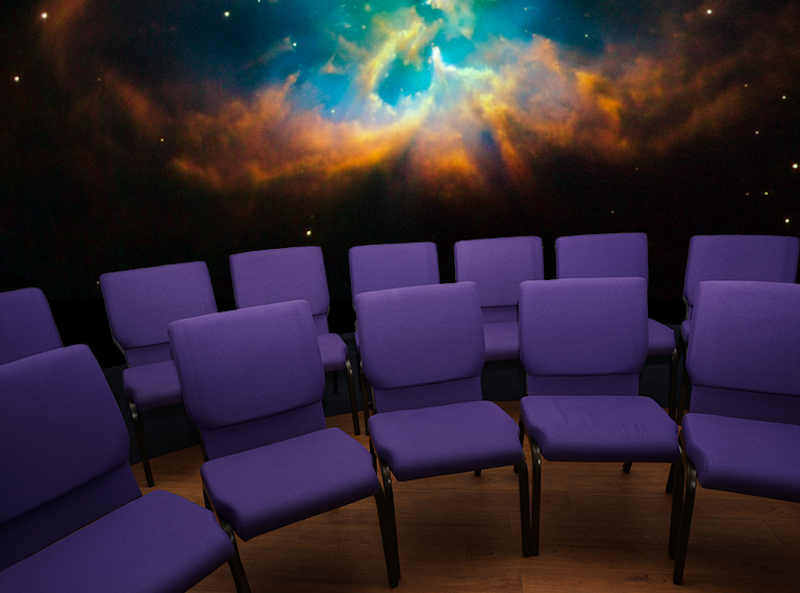
Blast off in the Holy City
Charleston Planetarium, Charleston
Drive time: 2 hours (100 miles)
Just a short trip up the coast, the Charleston Planetarium makes a welcoming entry point into the world of stargazing. Open to the public, it’s especially inviting for families with young children or anyone new to astronomy. The shows weave science with storytelling, so you leave with both knowledge and a sense of wonder. Sweeping projections of planets, constellations and galaxies fill the dome, while friendly staff are on hand to answer questions and guide the experience. It’s an easy, approachable way to start exploring the night sky.
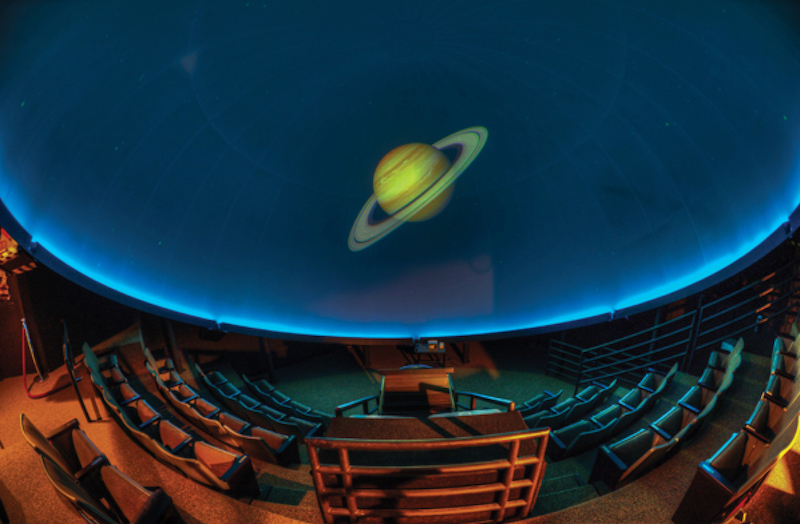
Double vision
DuPont Planetarium & RPSEC Observatory, Aiken
Drive time: 2 hours, 30 minutes (140 miles)
Located on the USC Aiken campus, this stop offers two stellar experiences in one visit. The DuPont Planetarium hosts public, ticketed shows, mostly on weekends, covering everything from the life cycle of stars to the mysteries of black holes and the wonders of our solar system. After the dome show, you can step next door to the Ruth Patrick Science Education Center Observatory, where knowledgeable staff will guide you through views of the night sky using powerful telescopes. On a clear evening you might catch Saturn’s rings, the craters of the moon or even a distant nebula with your own eyes.
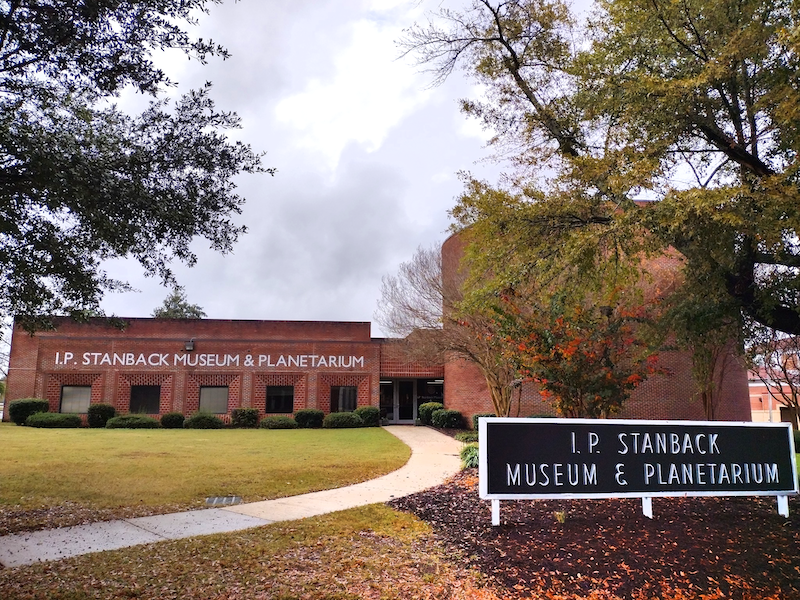
A cultural constellation
I.P. Stanback Museum & Planetarium, Orangeburg
Drive time: 2 hours, 45 minutes (155 miles)
Operated by South Carolina State University, this 40-foot planetarium seats 82 and features a full-dome Warped Media projection system with more than 20 scientific shows to choose from. Just steps away, the museum adds another dimension with two galleries showcasing African and African-American art, artifacts, fine art and photography. Together they create a blend of science and culture that’s both thought-provoking and visually inspiring. Shows and museum access are open to visitors, though schedules can vary, so it’s best to check ahead before planning your trip.
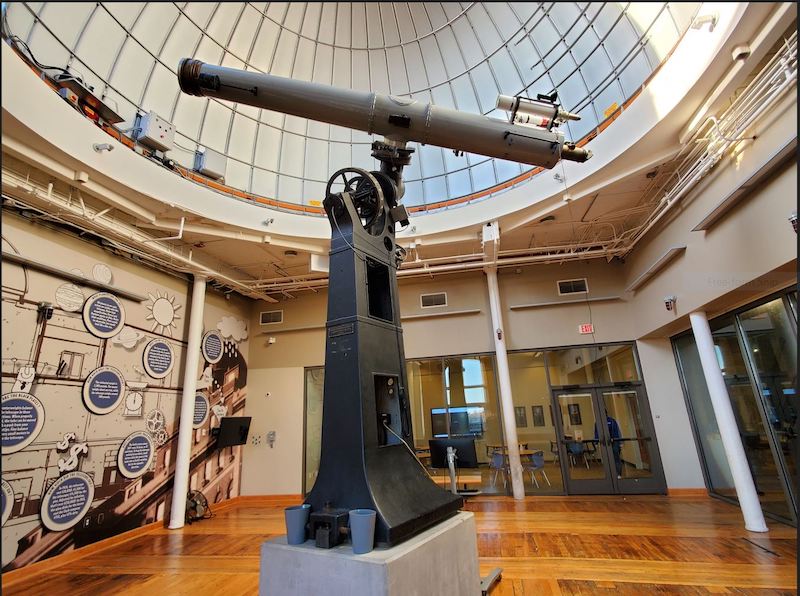
History meets the heavens
Boeing Observatory, SC State Museum, Columbia
Drive time: 3 hours (160 miles)
Part of the South Carolina State Museum, the Boeing Observatory invites the public to explore both the past and the stars. Its crown jewel is a 1926 Alvan Clark refracting telescope, a historic instrument that still delivers crisp views of the night sky. While you’re there, you can dive into hands-on science exhibits, catch a show in the planetarium and wander through galleries that showcase everything from dinosaurs to South Carolina history. With so many attractions under one roof, it’s an easy and rewarding road trip for families.
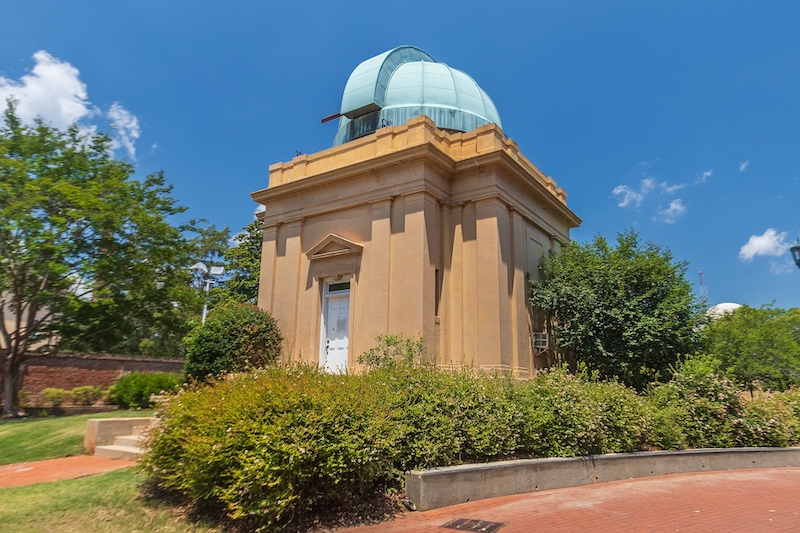
Campus nights, cosmic sights
Melton Memorial Observatory, University of South Carolina, Columbia
Drive time: 3 hours (160 miles)
Run by USC’s Department of Physics and Astronomy, this observatory sits on the historic Horseshoe and opens to the public on clear Monday nights from 9 to 11 p.m. Its 16-inch Cassegrain telescope offers crisp views of the heavens, giving students, researchers and visitors alike a chance to explore the night sky. On a good evening, you might catch Jupiter’s moons, Saturn’s rings or even the faint glow of a nebula. The experience is simple and low-key but also deeply rewarding for anyone with a curious eye turned upward.

Family stars and city lights
Dooley Planetarium, Francis Marion University, Florence
Drive time: 3 hours, 30 minutes (190 miles)
Dooley Planetarium is a community favorite, thanks to its wide range of programming. Some shows keep things simple with bright visuals and easy-to-follow explanations for kids, while others dive into deeper astronomy topics that intrigue older audiences. Under the dome the night sky expands above you in vivid detail. Admission is free, though shows are only offered on select Sundays during the academic year, so planning ahead is essential. After your visit Florence’s downtown restaurants and shops provide the perfect way to wrap up the evening.
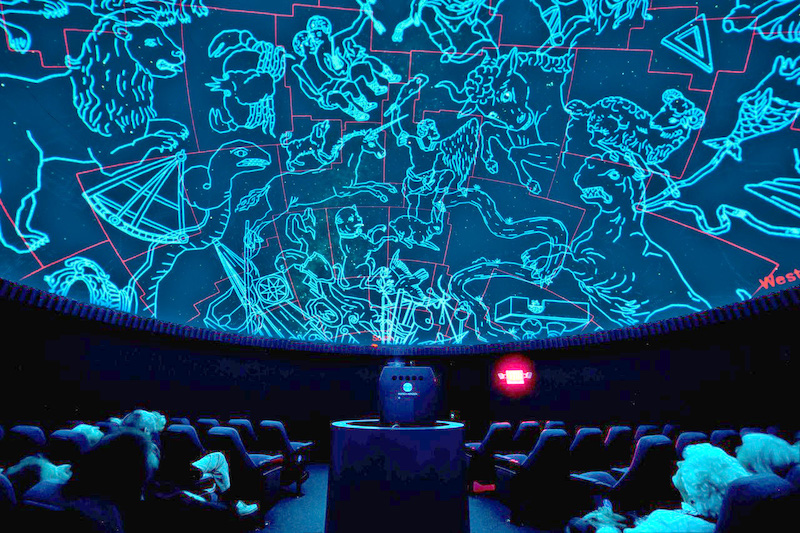
York County’s cosmic connection
Settlemyre Planetarium, Museum of York County, Rock Hill
Drive time: 3 hours, 45 minutes (210 miles)
The Settlemyre Planetarium is part of the Museum of York County, which means your visit goes far beyond stargazing. Inside the dome, shows bring constellations and galactic phenomena to life. Afterward you can wander through exhibits that trace the universe’s timeline, then step outside to explore the museum’s trails and green spaces. It’s an ideal stop for families who want a mix of education and fresh air. Check the museum’s online calendar for current show times.

Tiger Town’s hidden galaxy
Clemson University Planetarium, Clemson
Drive time: 4 hours, 45 minutes (270 miles)
Smaller than many of the state’s planetariums, Clemson’s version shines, thanks to the enthusiasm of the university’s physics department. While it is primarily a teaching facility, the planetarium opens its doors to the public a few times each semester for free or low-cost shows. Dates can be irregular, so be sure to check the schedule before making the trip. If your visit happens to fall during football season, it makes a perfect counterbalance to the roar of Death Valley, offering a quiet and thoughtful journey into the stars.
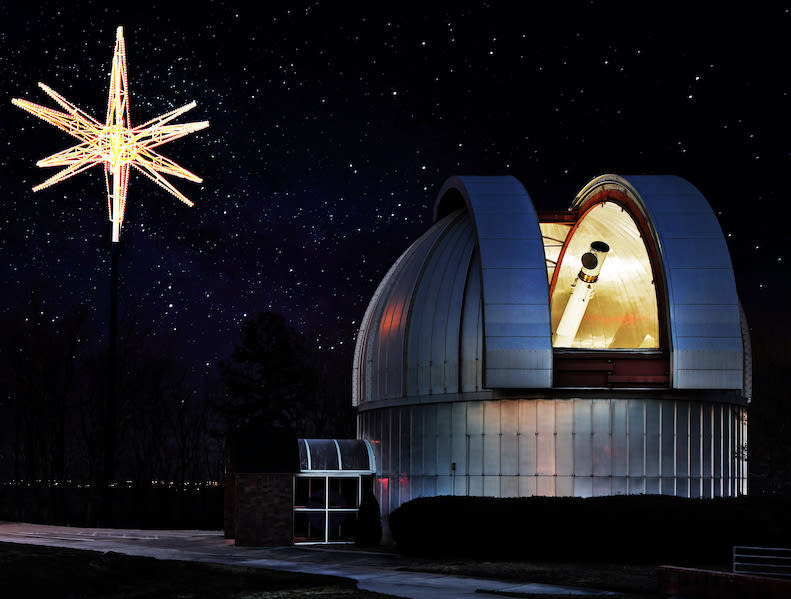
Mountains of science, skies of wonder
Roper Mountain Science Center, Greenville
Drive time: 4 hours, 45 minutes (285 miles)
Roper Mountain is one of South Carolina’s largest science centers, and its planetarium is a true centerpiece. The dome’s advanced projection system makes each show feel larger than life, surrounding you with galaxies, planets and cosmic wonders. Public programs run regularly, and there’s plenty more to explore once the lights come up. Depending on the season, you can wander through interactive science exhibits, walk shaded nature trails or step into the butterfly garden. Just minutes from downtown Greenville, the center makes an easy pairing with dinner or a leisurely stroll along Main Street.
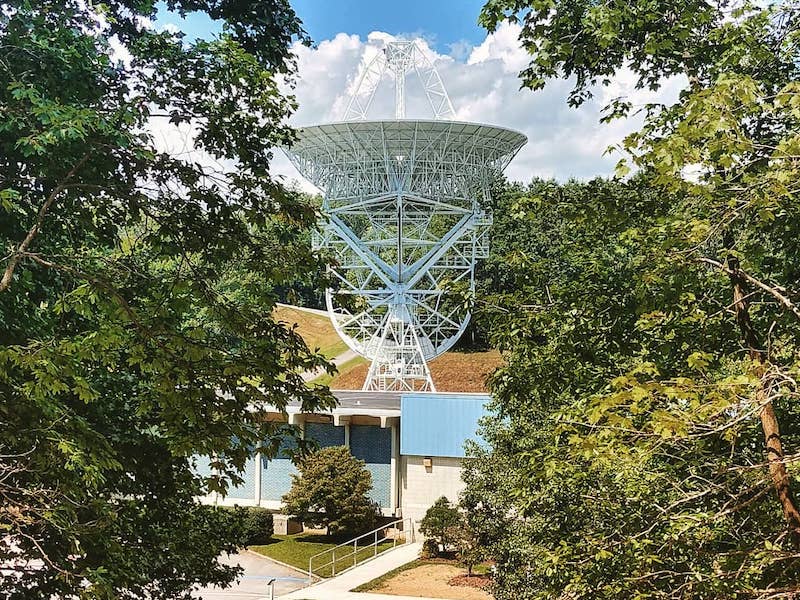
NASA’s mountain stargate
Pisgah Astronomical Research Institute (PARI), Rosman, N.C.
Drive time: 5 hours (300 miles)
If you’re up for a longer road trip, PARI is worth every mile. Once a top-secret NASA tracking station, today it blends serious science with public education. You won’t find casual walk-in hours here; visits happen through guided tours, scheduled programs and special events. Massive radio telescopes rise out of the Blue Ridge landscape, giving the place an otherworldly feel. Programs range from hands-on skywatching and science workshops to kids’ camps, making it both a playground for curious minds and a hub for real research.









